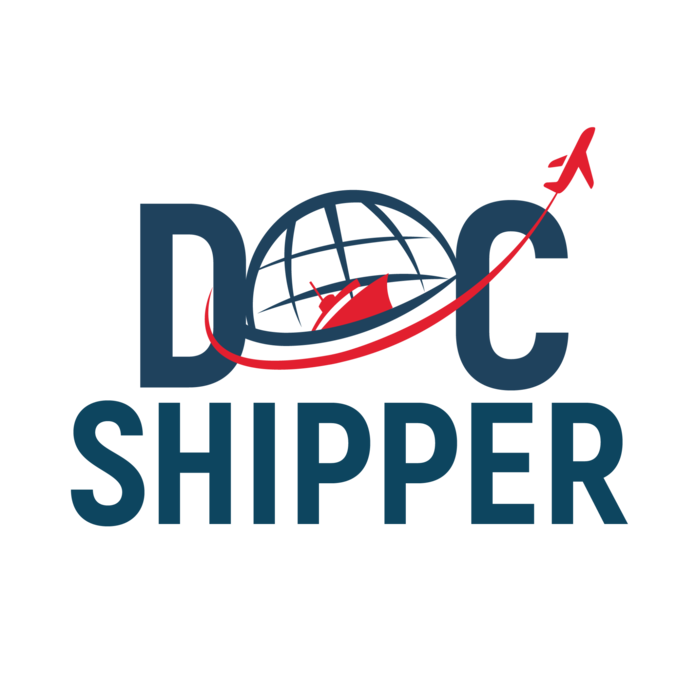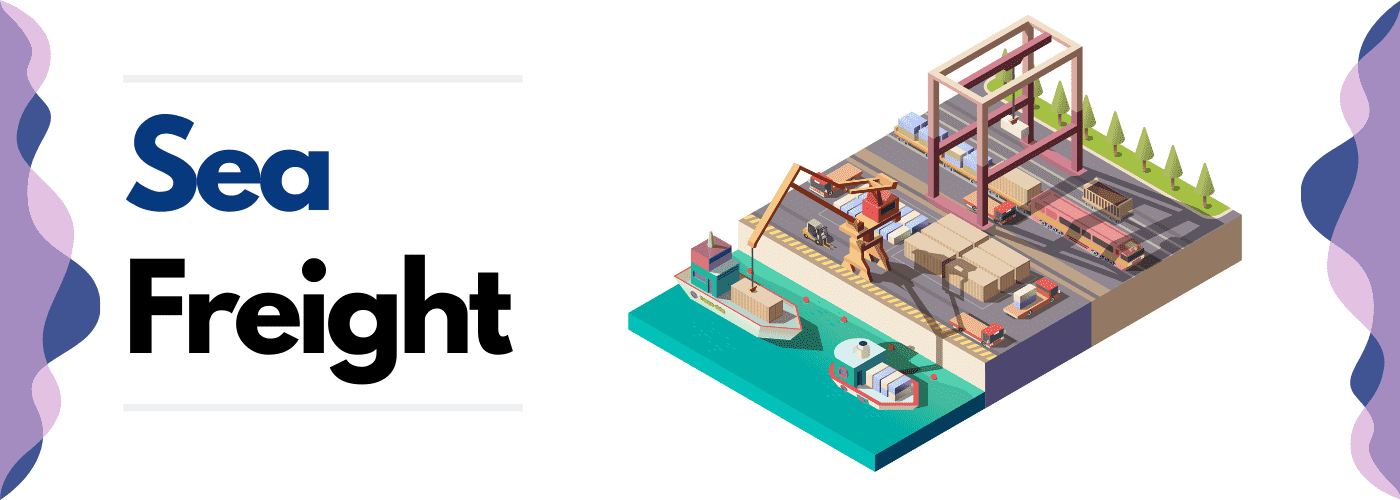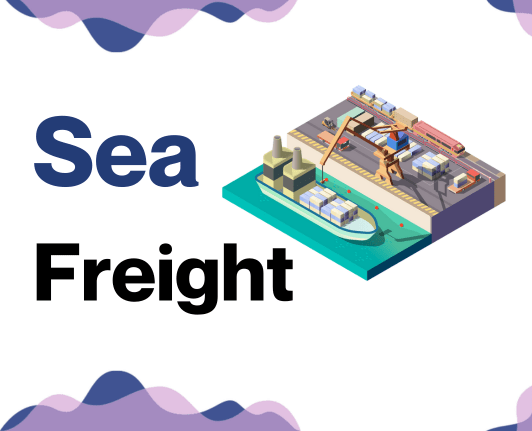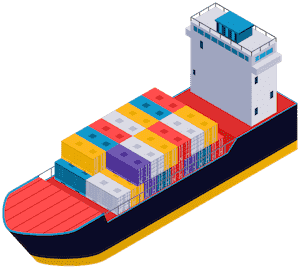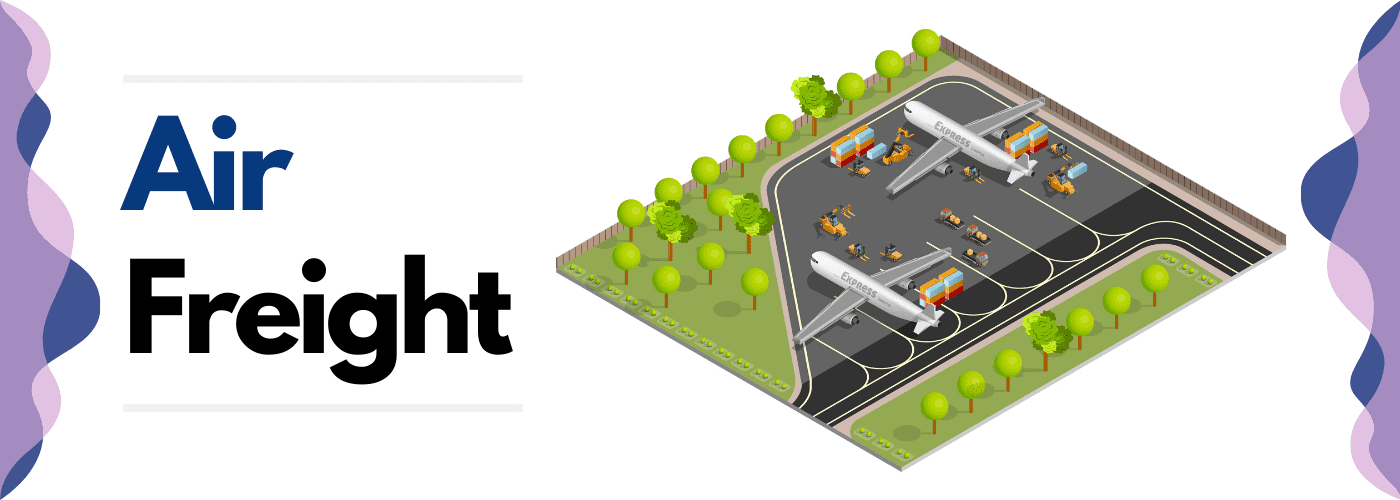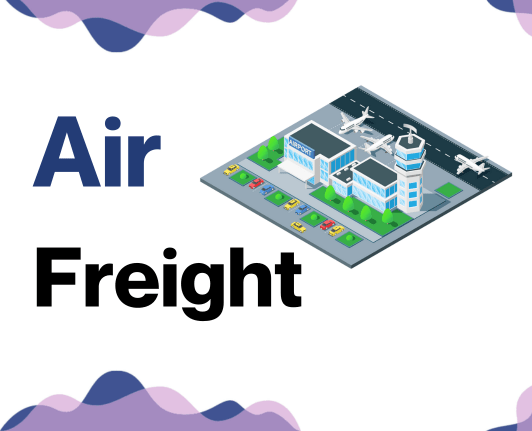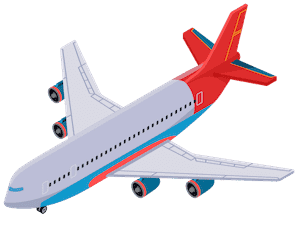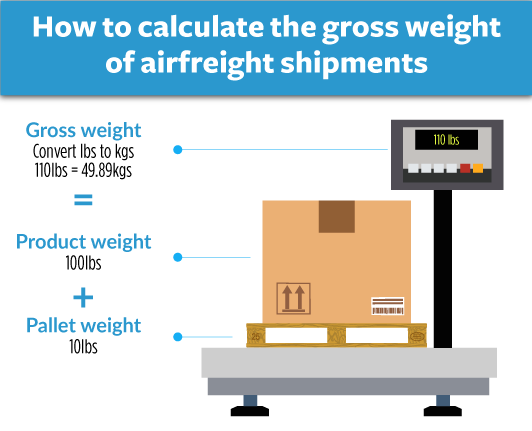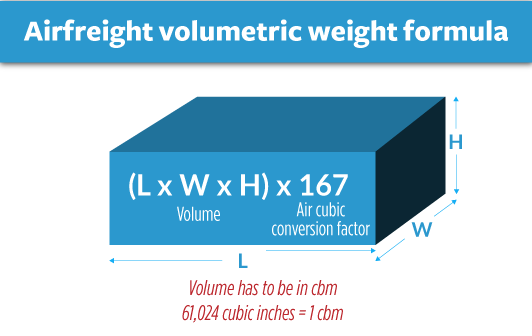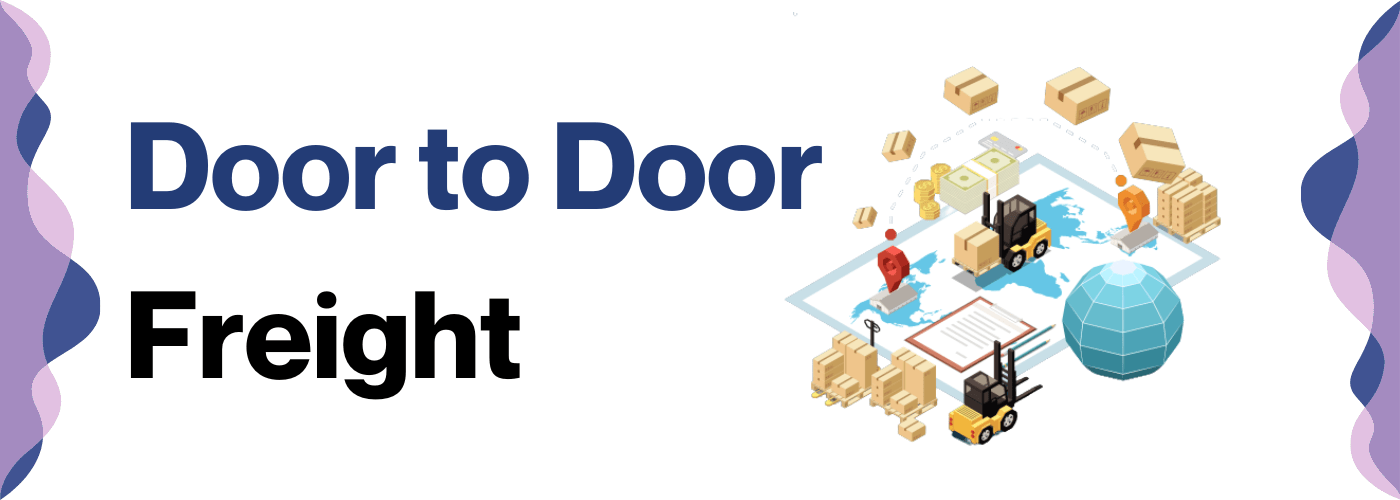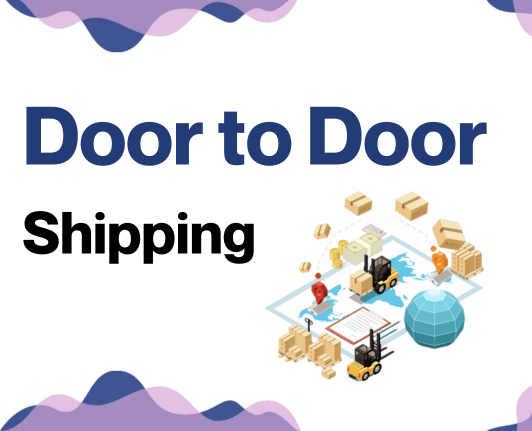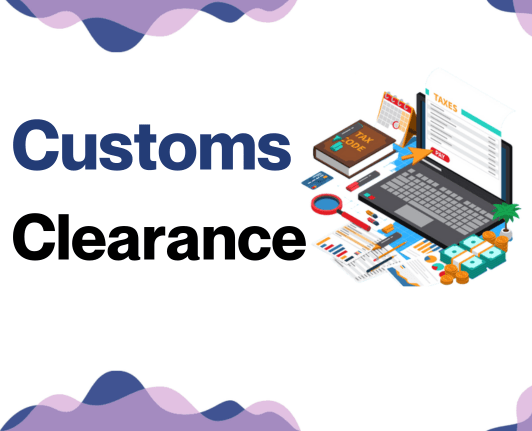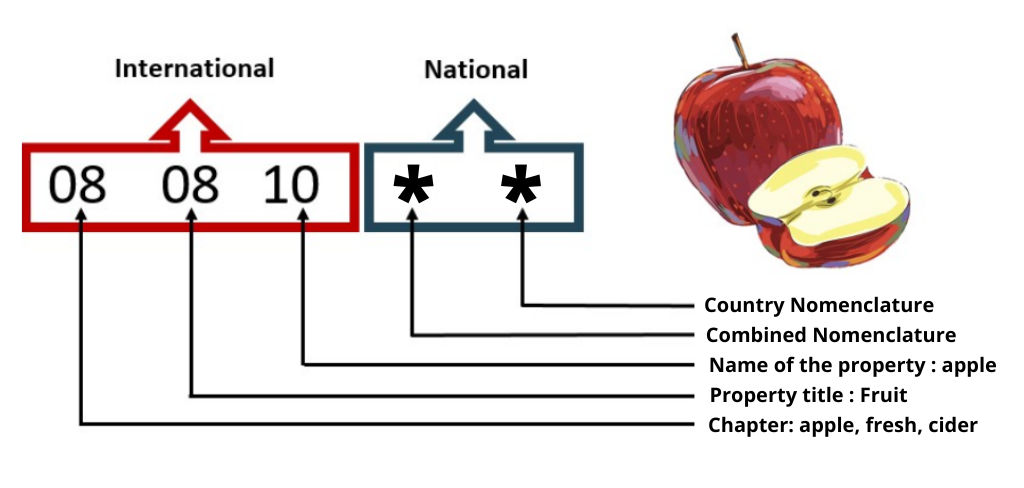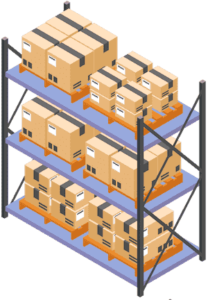Ever thought of shipping goods between the US and Tunisia can be as complex as a camel finding a parking spot in New York City? Well, the overwhelming rates, transit times, and ever-evolving customs regulations can make it feel exactly that way. This guide is your compass through the often-confusing world of international freight transportation. It includes everything you need to know about different freight options, how to navigate the labyrinth of customs clearance, understand duties and taxes, and receive valuable advice tailored exclusively for businesses looking to break barriers and go global. And if the process still feels overwhelming, let DocShipper handle it all for you! Providing end-to-end services, we turn your freight-transportation challenges into successful, hassle-free shipping experiences.
Table of Contents
ToggleWhich are the different modes of transportation between US and Tunisia?
Bridging the divide between the US and Tunisia can feel like preparing for a cross-continental race - each transport method has its own speed, costs, and challenges! Think about this: the sheer distance and sea between them might rule out a simple road trip. So, should you sail the Atlantic and Mediterranean Sea or book a sky-high express journey? Each choice, be it sea or air, has its own path to victory. But remember, just like picking the right racehorse, the best transport method depends on your specific shipping goals and what hurdles you're prepared to jump.
How can DocShipper help?
Struggling to ship goods between the US and Tunisia? DocShipper simplifies the process for you. From transport organization to complex customs procedures, we smooth your path to international trade. Curious? Phone our consultants at no cost, or request a free quote within just 24 hours. It's the expertise you need, delivered with speed.
DocShipper Tip: Sea freight might be the best solution for you if:
- You are shipping large volumes or bulky items, as sea freight offers the most space at a cost-effective rate.
- Your cargo doesn't have an urgent deadline, as sea freight typically has longer transit times compared to air or rail.
- Your shipping routes are between major ports, allowing you to leverage the extensive global network of sea shipping lanes.
Sea freight between US and Tunisia
For businesses seeking to tap into the dynamic trade relationship between the US and Tunisia, ocean shipping stands as a reliable conduit. Key industrial strongholds like New York, Savannah, and Los Angeles in the US synchronize synergies with Tunisian counterparts such as Rades and Sfax through an intricate network of cargo ports. This symbiotic interaction births a realm of possibilities, with sea freight offering an economically viable solution for transporting high-volume goods. However, this cargo titan's deliberate pace can't be ignored.
But it's not all smooth sailing on these oceanic trade routes. Many shippers stumble into common pitfalls, transforming shipping into a task more daunting than deciphering ancient hieroglyphs. But fear not, beneath these challenges lies a cornucopia of best practices and shipping specifications. Think of it as learning the secret handshake to the elite club of international shipping. With these tools in your cargo-handling arsenal, you'll navigate the waves of shipping between the US and Tunisia like an experienced sea captain. In this guide, we unravel these complexities for a seamless journey across the Atlantic.
Main shipping ports in US
Port of Los Angeles:
The Port of Los Angeles, positioned in San Pedro Bay, is the busiest in the United States by container volume and cargo value. With a shipping volume of about 9.5 million TEUs in 2020, it plays a critical role in US trade.
Key Trading Partners and Strategic Importance: The Port of Los Angeles primarily trades with Asia. China, Japan, Hong Kong, South Korea, and Vietnam are their top trading partners. It plays a strategic role by offering 270 berths for vessels.
Context for Businesses: If you're looking to reach a vast US consumer market efficiently, the Port of Los Angeles boasts robust infrastructural connections via road and rail, allowing for quick domestic distribution of goods.
Port of Long Beach:
Situated just south of Los Angeles, the Port of Long Beach is the second busiest port in the United States, handling over 8.1 million TEUs in 2020.
Key Trading Partners and Strategic Importance: Like the Port of Los Angeles, the Port of Long Beach trades predominantly with Asia. The major trading partners include China, Japan, South Korea, and Vietnam.
Context for Businesses: If your business strategically focuses on Asian markets and needs quick access to the US, the Port of Long Beach, with their on-dock rail services providing seamless cargo transition, may be a prominent component in your shipping puzzle.
Port of New York & New Jersey:
The largest port on the East Coast of the US, the Port of New York & New Jersey handled 7.6 million TEUs in 2020.
Key Trading Partners and Strategic Importance: Its key trading partners are China, India, Germany, Italy, and Belgium. The port stands strategically as the gateway to one of the most concentrated and affluent consumer markets in the world.
Context for Businesses: If you're seeking to target a luxury or high-end market, the Port of New York & New Jersey, with its proximity to wealthy consumers and variety of shipping services, could be a key element in your shipping strategy.
Port of Savannah:
The Port of Savannah in Georgia is the fourth busiest in the United States, handling over 4.6 million TEUs in 2020.
Key Trading Partners and Strategic Importance: It principally trades with China, India, Germany, and Vietnam. The port supports numerous industries like retail, manufacturing, and farming due to its versatile handling capabilities.
Context for Businesses: With its ability to handle all types of cargo and efficient inland connections, the Port of Savannah could be a one-stop solution for businesses seeking versatile cargo handling and deeper penetration into the southern US market.
Port of Houston:
The Port of Houston in Texas is one of the largest in the US in terms of total tonnage, with 2.9 million TEUs handled in 2020.
Key Trading Partners and Strategic Importance: Mexico, China, Brazil, The Netherlands, and South Korea are the key trading partners. It plays a strategic role in the oil, petrochemical, and heavy machinery industries.
Context for Businesses: If you're an Energy, Machinery, or Petrochemical sector business, the Port of Houston, with its great infrastructure and array of services, could fit your shipping needs perfectly.
Port of Seattle Tacoma:
The Port of Seattle Tacoma in Washington ranks as one of the busiest container ports in North America. It managed circa 3.4 million TEUs in 2020.
Key Trading Partners and Strategic Importance: The port is critical for trade with China, Japan, South Korea, Vietnam, and Taiwan. It also plays a strategic role in serving the regional distribution centers in the Pacific Northwest.
Context for Businesses: The Port of Seattle Tacoma could be your vital cog in reaching and serving the Pacific Northwest consumer markets, thanks to its prime location and seamless connections.
Main shipping ports in Tunisia
Port de Rades
Location and Volume: Situated on the Mediterranean Sea near the capital city of Tunis, the Port de Rades is a crucial hub for Tunisia's trade. This port handles an annual volume of about 700,000 TEU.
Key Trading Partners and Strategic Importance: Port de Rades' central trading partners include Italy, France, and Germany, highlighting its role in European commerce. The strategic location of the port makes it an ideal gateway to Europe, North Africa, and the Middle East.
Context for Businesses: If you are considering a business expansion into the European, North African, or Middle Eastern markets, the Port de Rades could factor significantly into your logistics due to its excellent connectivity and proximity to various key markets.
Port of Sfax
Location and Volume: Port of Sfax is located on the Gulf of Gabes, which is a major export base for Tunisia's energy industry. It handles around 200,000 TEU annually.
Key Trading Partners and Strategic Importance: This port primarily trades with France and Italy, but also has ties with Spain, Turkey, and other Mediterranean countries. It plays a strategic role in Tunisia's phosphates, oil, and natural gas exports.
Context for Businesses: If your business deals in energy-sector goods, the Port of Sfax is a key port due to its access to major markets across the Mediterranean and Middle East. The port's expertise in handling energy products could be integral to your mailing strategy.
Port of Bizerte
Location and Volume: Located on the Mediterranean at the mouth of the Bizerte Canal, the Port of Bizerte is Tunisia's northernmost port and a historical naval base that handles around 100,000 TEU yearly.
Key Trading Partners and Strategic Importance: The port has strong trading relationships primarily with European countries, such as Italy and France. The port's strategic importance lies in its position as a critical import and export hub for general cargo and bulk commodities.
Context for Businesses: If your business revolves around bulk commodities or general cargo, the Port of Bizerte could be a useful inclusion in your supply chain because of its specialized handling facilities and smooth access to European markets.
Should I choose FCL or LCL when shipping between US and Tunisia?
When shipping goods between the US and Tunisia, your choice between Full Container Load (FCL) and Less than Container Load (LCL) can be a make-or-break decision. This hinges on factors like cost, speed, and the nature of your cargo. Think of it like choosing between hiring a whole bus or just buying a ticket for your product's international journey. Make the right choice, and your goods will arrive safely, promptly, and cost-effectively. Let's delve into the nuances of these options to find the perfect fit for your unique shipping needs.
LCL: Less than Container Load
Definition: LCL (Less than Container Load) shipping refers to shipments that don't fill an entire container. This method combines cargo from multiple shippers into a single container for transport.
When to Use: For small volume shipments, usually less than 13-15 CBM (cubic meters), LCL shipping is a good choice. It offers pricing flexibility, as you only pay for the space you use, unlike Full Container Load (FCL) shipping which charges a flat rate for the entire container, even if not fully utilized.
Example: Suppose your business is exporting artisanal olive oil from the US to Tunisia, and your shipment takes up around 10 CBM. The LCL shipment option would be ideal for you because you are not filling the entire container and it could save you unnecessary costs.
Cost Implication: The cost of LCL freight is more variable than FCL, as it depends on the actual volume of goods shipped. Although the per CBM rate is higher in LCL compared to FCL, you may still reduce overall costs since you're not paying for unused space. The flexibility and affordability of LCL freight make it an excellent choice for smaller or infrequent shippers.
FCL: Full Container Load
Definition: FCL (Full Container Load) is a mode of shipping where a cargo exclusively occupies a whole 20'ft or 40'ft container.
When to Use: FCL shipping is your go-to option when your cargo exceeds 13/14/15 cubic meters. Because of volume, it's more budget-friendly than LCL, or Less than Container Load. Another advantage is safety, as the FCL container is sealed from origin to destination, limiting potential damage or theft.
Example: Imagine you're a machine parts manufacturer in Ohio sending a bulk order to a car assembly plant in Tunisia. The order fills up an entire 20'ft container. Here, opting for FCL shipping ensures cost-effectiveness and enhances the security of your sensitive merchandise.
Cost Implications: With FCL, you pay for the entire container's transport, leading to lower rates for high volume shipments. However, these costs can fluctuate with fuel surcharges, port fees etc. Always ask your forwarder for an FCL shipping quote to avoid unexpected expenses. Remember, while FCL can be more upfront, the cost per unit shipped tends to be lower, making it a financially savvy option for bulk shippers.
Unlock hassle-free shipping
Discover a world of effortless cargo shipping with DocShipper, your trusted freight forwarder. Our team of ocean freight gurus stand ready to guide you, reflecting on key factors such as volume, cost, and transit time. Whether consolidation or a full container suits your US-Tunisia route, we have the expertise to aid your decision. Ready for a smooth-sailing shipping journey? Request your free estimation today, and commence your hassle-free shipping experience with DocShipper!
How long does sea freight take between US and Tunisia?
Sea freight between the US and Tunisia typically takes approximately 15 to 34 days. However, these transit times can vary depending on several factors such as the specific ports in use, the weight, and the nature of the goods. For a tailored quote that considers all these factors, it's recommended to get in touch with a freight forwarder like DocShipper.
As for the various American and Tunisian freight ports, our table below shows the average transit times. Please note these are average measurements, and actual times may vary.
| U.S Ports | Tunisia Ports | Average Transit Time (Days) |
| Port of Los Angeles | Port of Rades | 31 |
| Port of New York & New Jersey | Port of Bizerte | 15 |
| Port of Seattle-Tacoma | Port of Sousse | 34 |
| Port of Savannah | Port of Sfax | 34 |
*Remember, these times are estimate only. Several factors could lead to changes in these transit durations.
For more accurate transit times tailored to your specific needs, contacting a freight forwarder is recommended.
How much does it cost to ship a container between US and Tunisia?
While it's challenging to provide a definitive price on shipping your goods via ocean freight from the US to Tunisia, we can offer a ballpark range of approximately $50 to $300 per CBM. This estimate hinges upon several factors, not least among them your Point of Loading, Point of Destination, your chosen carrier, the nature of the goods you’re shipping, and market conditions that can fluctuate month-to-month. However, you can trust in our dedicated shipping specialists, who will work diligently to quote you the best possible shipping cost, tailoring their approach to your specific needs. We fully understand that no two shipments are the same, hence our commitment to a case-by-case pricing strategy.
Special transportation services
Out of Gauge (OOG) Container
Definition: An OOG container is a special type of shipping container designed to carry out of gauge cargo, basically those cargoes exceeding the dimensions of a standard shipping container.
Suitable for: Out of Gauge containers are apt for transporting large equipment, machinery, or goods with unconventional sizes or shapes that do not fit in standard containers.
Examples: Items such as heavy construction machinery, industrial equipment or large boats can be transported using these special containers.
Why it might be the best choice for you: If your business needs to ship oversized items from the US to Tunisia that do not conform to regular dimensions, OOG containers can offer a tailored shipping solution allowing safe transportation of bulky items.
Break Bulk
Definition: Break bulk refers to the method of transporting goods that aren't containerized but are loaded, shipped, and unloaded individually.
Suitable for: Break bulk is ideal for handling large, heavy items, or cargo that isn't suited to container shipping.
Examples: Yachts, cranes, large spools of cable and timber are typically shipped as break bulk.
Why it might be the best choice for you: If your cargo is too large or heavy for a shipping container but doesn't warrant chartering an entire vessel, break bulk provides a cost-effective shipping solution.
Dry Bulk
Definition: Dry bulk is a shipping method where loose cargo like grain, coal, or aggregates are loaded directly into the ship's hold rather than being containerized.
Suitable for: It's best for transporting large quantities of commodities that can be easily poured or dropped, and don't need to be individually packaged.
Examples: Things like wheat, rice, coal, or construction aggregates are common dry bulk cargoes.
Why it might be the best choice for you: If your business involves shipping significant quantities of unpackaged commodities, dry bulk shipping represents a practical and economical option.
Roll-on/Roll-off (Ro-Ro)
Definition: Roll-on/Roll-off or Ro-Ro refers to a method where wheeled cargo, such as cars, trucks, trailers, and railroad cars, are driven on and off a ro-ro vessel.
Suitable for: Companies looking to transport wheeled and tracked vehicles or machinery that can be driven on the ramp will find the Ro-Ro method quite effective.
Examples: Vehicles, trailers, buses, and construction machinery (like excavators) typically use Ro-Ro shipping.
Why it might be the best choice for you: If your goods are mobile and self-propelled, the Ro-Ro method can be very efficient and economical as it allows your vehicles to be directly driven in and out of the vessel.
Reefer Containers
Definition: Reefer containers are refrigerated shipping containers used to transport temperature-sensitive goods.
Suitable for: Businesses dealing with perishable items such as fresh produce, meat, fish, dairy products, flowers, and pharmaceuticals.
Examples: Medicines, seasonal fruits, vegetables, fresh fish or meat, and dairy products are typically transported in reefer containers.
Why it might be the best choice for you: If your cargo needs certain temperature conditions to remain intact during shipping from the US to Tunisia, reefer containers offer a temperature-controlled solution to keep your goods fresh and in perfect condition.
Remember, the selection of shipping options depends largely on your cargo's nature and specific requirements. At DocShipper, we're poised to guide you through the intricate process of international freight forwarding. We offer personalized advisory services and free shipping quotes in less than 24 hours. Feel free to get in touch for any queries or to start shipping your cargo today.
DocShipper Tip: Air freight might be the best solution for you if:
- You are in a hurry or have a strict deadline requirement, as air freight offers the fastest transit times.
- Your cargo is less than 2 CBM (Cubic Meter), making it more suitable for smaller shipments.
- Your shipment needs to reach a destination that is not easily accessible by sea or rail, allowing you to tap into the extensive network of global airports.
Air freight between US and Tunisia
Looking to swiftly dispatch those electronics from US to Tunisia? Air freight is your ally. It's speedy, reliable, and surprisingly budget-friendly for smaller, high-value cargo like high-end gadgets. Imagine sending an iPhone - it’s lightweight, valuable, and needs to reach quickly. Air freight outshines other methods here.
But no roses without thorns! Consider the rookie exporter who underestimates his cargo’s weight and ends up overspending—a classic pitfall of not knowing the 'chargeable weight' formula. Or the seasoned shipper, unaware of potential cost-saving practices. It's like diving headfirst without checking the water depth. Don't worry, we'll guide you through these murky waters, avoiding these costly mistakes, in the coming segments.
Air Cargo vs Express Air Freight: How should I ship?
If you're contemplating the quickest way to get your goods from US to Tunisia, we've got two aces for you - Air Cargo and Express Air Freight. Picturing Air Cargo as hitchhiking a space in commercial airlines, while Express Air Freight is more like your goods flying in their private jet, we help you weigh the pros and cons for your unique business needs.
Should I choose Air Cargo between US and Tunisia?
Air cargo is a cost-effective and dependable choice to transport goods from the US to Tunisia. Airlines such as Delta Cargo and Tunisair Cargo are leaders in this mode of transport. With their stringent schedules, air cargo may have longer transit times. However, when shipping 100/150 kg (220/330 lbs) or more, this option becomes increasingly attractive due to economies of scale. If your budget allows, this could be an ideal solution. Check both Delta Cargo and Tunisair Cargo for more information on schedules and fees.
Should I choose Express Air Freight between US and Tunisia?
Express Air Freight, a specialized service carried out by cargo-only planes, can be your ideal solution for shipments under 1 CBM or 100/150 kg (220/330 lbs). Major courier firms such as FedEx, UPS, and DHL offer this trove of benefits: speedy delivery, higher reliability, and real-time tracking. Particularly for highly time-sensitive or valuable items, Express Air could be a surefire way to cut costs in the long run. If speed is a high-priority for your US-Tunisia shipments, this could be your ideal route!
Main international airports in US
Los Angeles International Airport
Cargo Volume: Handles more than 2.2 million metric tons of cargo annually
Key Trading Partners: High volume of trade with Asia, Australia, Europe and South America.
Strategic Importance: It is the busiest airport in the western United States and a key gateway for trade with Asia.
Notable Features: LAX holds one of the most comprehensive air cargo facilities in the U.S. handling different types of freight from perishable food to fashion.
For Your Business: If your company trades extensively with Asian markets, transporting goods via LAX can significantly improve transit times and provide cost efficiencies.
Miami International Airport
Cargo Volume: Moves over 2.3 million tons of cargo annually.
Key Trading Partners: Major connections with Latin America and Europe.
Strategic Importance: MIA is a primary gateway to Latin America and the Caribbean, handling 79% of all air imports and 77% of all exports to/from these regions.
Notable Features: MIA is known for its high volume of perishable goods, thanks to its state-of-the-art temperature-controlled facilities.
For Your Business: MIA is your ideal destination if your business deals in perishable goods or has strong trade connections with Latin America and the Caribbean.
John F. Kennedy International Airport
Cargo Volume: Handles around 1.3 million tons of cargo annually.
Key Trading Partners: Key markets include Europe, Asia, and South America.
Strategic Importance: Situated in New York, JFK is in the heart of a vast consumption area, which is beneficial to traders.
Notable Features: JFK has a vast infrastructure, including nine cargo terminals, to handle different types of goods.
For Your Business: JFK's strong connections with major markets, along with its receptiveness to various cargo types, make it an excellent hub for companies with diverse global trading needs.
Chicago O’Hare International Airport
Cargo Volume: Manages around 1.7 million tons of cargo per year.
Key Trading Partners: Primary trading partners are in Europe and Asia.
Strategic Importance: As a central point in the US, ORD's location makes it an ideal hub for cross-country and international distribution.
Notable Features: ORD is equipped with dedicated cargo complexes and is known for handling general and special commodities.
For Your Business: ORD could be a strategic choice if your business requires broad distribution, given its central location and comprehensive handling facilities.
Memphis International Airport
Cargo Volume: MEM handles an impressive 4.3 million metric tons of cargo each year, making it North America’s busiest cargo airport.
Key Trading Partners: Dominates routes to Europe and Asia.
Strategic Importance: MEM is the global SuperHub for FedEx Express operations, making overnight shipping possible almost anywhere in the US.
Notable Features: With extensive facilities and FedEx's primary hub, MEM is equipped for all kinds of cargo.
For Your Business: If your business demands rapid domestic delivery, consider MEM for its fastest overnight shipping service.
Main international airports in Tunisia
Tunis-Carthage International Airport
Cargo Volume: Approx 80,000 tons per year
Key Trading Partners: Primarily Europe, including countries like France, Italy and Germany
Strategic Importance: Serves as the primary international gateway to Tunisia, connected to major global routes
Notable Features: Offers a cargo village equipped with state-of-the-art technology and dedicated to the swift handling of goods
For Your Business: The airport’s strong European connections and cargo facilities make it an ideal hub if your business is heavily involved with Europe.
Enfidha-Hammamet International Airport
Cargo Volume: Increasing yearly with an overall capacity around 30,000 tons annually
Key Trading Partners: Predominantly Europe, with growing connections to Africa and the Middle East
Strategic Importance: Centrally located in the heart of Tunisia, it serves as a key cargo hub for the Sahel region
Notable Features: Its central location makes it well-suited for shipments across the country and onward to further destinations
For Your Business: If your operations are more domestically focused within Tunisia, this is an excellent choice that offers ease of access throughout the country.
Monastir Habib Bourguiba International Airport
Cargo Volume: Approximately 20,000 tons annually
Key Trading Partners: Trades extensively with Europe, with strong ties to France, Germany and Italy
Strategic Importance: Situated on Tunisia's coastline, it offers options for multimodal shipping ways
Notable Features: Its proximity to major seaports allows for multimodal shipping, air-sea or air-road, increasing flexibility
For Your Business: This airport offers your business the advantage of multimodal shipping options, leading to potential cost savings and logistical advantages.
Sfax-Thyna International Airport
Cargo Volume: Over 5,000 tons per year
Key Trading Partners: Primarily conducts trade with countries in Europe and the Middle East
Strategic Importance: Major hub in southern Tunisia, playing a crucial role in regional commerce
Notable Features: Offers special cargo services, including frozen and temperature-controlled goods
For Your Business: This could be a highly strategic choice if you handle sensitive cargo with specific temperature requirements.
Djerba-Zarzis International Airport
Cargo Volume: Handles around 4000 tons each year
Key Trading Partners: Deals primarily with the European market, with France, Germany, and Italy being key trading partners
Strategic Importance: Provides easy access to the Southeastern part of Tunisia and caters to the North African market
Notable Features: Caters to a wide range of cargo, inclusive of perishable goods
For Your Business: Suitable for businesses dealing with perishable goods, looking for access to both European and North African markets.
How long does air freight take between US and Tunisia?
Shipping on average from the US to Tunisia by air freight typically takes around 2 to 6 days. However, it's essential to note that transit times can fluctuate due to several factors. These include the specific airports involved, the weight and nature of the goods being transported. For precise times, considering these factors, consulting with a freight forwarder like DocShipper is highly recommended.
How much does it cost to ship a parcel between US and Tunisia with air freight?
Air freight rates for shipping goods from the US to Tunisia range roughly between $3.00 and $10.00 per kg. But remember, these rates are approximate. The exact costs depend on several factors, such as distance between departure and destination airports, dimensions and weight of the parcel, as well as the type of goods being shipped. Rest assured, we at our freight forwarding company are dedicated to providing customized quotes best suited to your unique shipping requirements—all on a case-by-case basis. Eager to find out what your shipment might cost? Contact us and receive a free quote within 24 hours.
What is the difference between volumetric and gross weight?
Gross weight refers to the actual weight of your entire shipment, measured in kilograms. Volumetric weight, alternatively, reflects the density of your shipment—it's a calculation of the space your goods occupy.
Now let's decode how to calculate each for different services.
For Air Cargo, you'd calculate the volumetric weight by multiplying the length, width, and height of your package (in centimeters) and dividing the result by 6000. Say your shipment’s dimensions are 50cm x 30cm x 40cm. This yields a volumetric weight of 20kg (or about 44 lbs).
On the flip side, with Express Air Freight, you'd follow the same calculation principle, but you divide by 5000 instead. So, the same package would give you a volumetric weight of 24kg (or about 53 lbs).
When it comes to your shipment's gross weight, it's pretty straightforward. It's simply the weight of both your goods and their packaging. Let's say that's around 22kg (or about 49 lbs) for this shipment.
So, why do these details matter? Freight charges are computed based on whichever is higher between the gross and volumetric weights. Thus, the right calculations lead to accurate estimates, helping you budget your shipping expenses more effectively.
DocShipper tip: Door to Door might be the best solution for you if:
- You value convenience and want a seamless shipping process, as door-to-door takes care of every step from pickup to delivery.
- You prefer a single point of contact, as door-to-door services typically provide a dedicated agent to handle all aspects of the shipment.
- You want to minimize the handling of your goods, reducing the risk of damage or loss, as door-to-door minimizes transitions between different modes of transport.
Door-to-door between US and Tunisia
Uncover the magic of International Door to Door shipping - your all-inclusive ticket to hassle-free transport from the heart of America to the vibrant markets of Tunisia. Promising unparalleled convenience and micro-precision in delivery, door-to-door service swoops in as an efficient all-rounder. So, are you ready to explore a transformative shipping experience? Let's dive in!
Overview: Door-to-Door
Relax, shipping your goods between the US and Tunisia can be a breeze with our sought-after Door-to-Door service! This premium yet economical solution simplifies the challenging and complex logistics process. Forget worrying about tedious customs, duties, or multiple carriers; our service seamlessly handles everything from start to finish. Why choose it? It's entirely stress-free, allows your business uninterrupted workflow, and saves you time. Although it may cost a bit more than traditional shipping, the high-value convenience is unbeatable. Embrace this practical, smooth, and consistent shipping option that our clients rave about. Remember, efficient logistics is the key to successful global trading.
Why should I use a Door-to-Door service between the US and Tunisia?
Ever had trouble fitting a camel through the eye of a needle? Well, shipping from the US to Tunisia can sometimes feel the same way! But with door-to-door service, you don't have to sweat the small stuff—or, in this case, the big, bulky, dangerous, or delicate stuff.
1. Stress-Free Logistics: With door-to-door service, your goods will be picked up and delivered right to their final destination. No more wrestling with logistics or puzzling over the best route—it's all taken care of!
2. Timely Delivery for Urgent Shipments: The clock is always ticking, especially in business. You need your goods delivered yesterday, and Door to Door service is here to make that happen—well, almost! The swift and efficient system ensures that urgent shipments reach their destination on time.
3. Specialized Care for Complex Cargo: Have a special cargo? Or are you just nervous about your grandma's heirloom rocking chair? Don’t fret! Complex and fragile cargo receives extra attention and care from pickup, throughout travel, and up until final delivery.
4. Seamless Customs Process: Navigating customs can feel like trying to decipher hieroglyphics. Door-to-door service takes the hieroglyphics and translates them into smooth sailing, taking care of all the customs procedures and paperwork, so you don't have to.
5. Convenience and Comfort: Imagine lounging in your favorite armchair while your cargo is being shipped and delivered halfway across the world. Now make that a reality. Door-to-door services make shipping goods as easy as clicking a button!
So there you have it. Door-to-door services are a hassle-free, worry-free, and, let's admit it, a wrinkle-free solution to all your international shipping needs. Does it cost a little more? Yes. Is it worth every penny? Absolutely!
DocShipper – Door to Door specialist between US and Tunisia
Streamline your international shipping experience with DocShipper's comprehensive door-to-door service from the U.S to Tunisia. Our team offers end-to-end solutions, from packaging to customs clearance, encompassing all modes of transport. Breathe easy knowing a dedicated Account Executive is overseeing your shipment's journey. Quotes are free and available within 24 hours. Seek guidance anytime from our expert consultants at no cost. Trust us to make shipping between countries as effortless as possible.
Customs clearance in Tunisia for goods imported from US
Customs clearance, the key step where your goods must meet specific standards before entering Tunisia from the US, isn't a walk in the park. The world of customs duties, taxes, quotas, and licenses can quickly turn into a quagmire of unexpected fees, leaving your goods stranded in limbo. Additionally, it's worth noting that overlooking these aspects could cause obstacles that slow the journey of your freight. But don't worry! The following sections will explore these crucial areas in detail. For smooth sailing, remember that DocShipper is on hand, assisting you every step of the way for any kinds of goods worldwide. If you need an estimate to plan your project, just contact our team with the origin, value, and HS Code of your goods. Let's navigate these waters together!
How to calculate duties & taxes when importing from US to Tunisia?
When importing goods from the US to Tunisia, accurately estimating duties and taxes is a crucial step in your planning process. This can sometimes feel like navigating a maze, but don't fret, we'll streamline it for you here. The calculation of customs duties begins with several key pieces of information - the item's country of origin, the HS (Harmonized System) Code, the Customs Value, and the Applicable Tariff Rate. There might also be other taxes and fees depending on the nature of your goods.
The very first step in this process is determining where your goods were manufactured or produced. It's not just where you're shipping from, but also about the roots of your products, the birthplace of their manufacturing or production. This information forms the building block that the rest of your duties and taxes estimate will be based upon.
Step 1 - Identify the Country of Origin
Knowing the Country of Origin - USA in your case, vitalizes the import process for five pivotal reasons.
Firstly, it simplifies HS Code procurement – a critical factor in calculating your estimated duties and taxes. Second, the origin of goods is a determinant factor in selecting the appropriate tariff rates. Duplication is not amusing, isn't it? That's where the third reason steps in - to avoid potentially paying duties twice due to tariff-overlapping goods. Fourth, the country of origin directly impacts product labeling requirements, ensuring consumer transparency. Last, but certainly not least, it often defines the safety, health, and technical standards your goods need to meet.
There are specific trade agreements between the US and Tunisia, like the Trade Investment Framework Agreement (TIFA). This agreement facilitates a friendlier business environment by carving down tariffs, duties, and trade barriers. Increase your savings by leveraging these trade perks!
Certain goods face import restrictions from Tunisia. For example, specific agricultural products and textiles. Hence, understanding restrictions upfront safeguards you from a late-stage shipment rebound. Always ensure products you import are permitted by local laws.
Follow these steps, and you'll be shipping your goods smoothly and punctually, all while pocketing some extra savings!
Step 2 - Find the HS Code of your product
Understanding the Harmonized System (HS) Code of your product is central to your shipping process. The HS code is a standardized numerical method of classifying traded goods, recognized and used globally. It streamlines customs clearance procedures, making it easier to determine tariffs and duties and adhere to international trade regulations.
Often, the easiest means of determining the HS code for a product is by asking the supplier. Suppliers, being familiar with what they're importing and the related regulations, are typically well-versed in identifying appropriate HS codes.
However, if asking the supplier is not an option, fear not! You can determine the HS code independently. To do this, you will need to use an HS lookup tool, such as this Harmonized Tariff Schedule. Once there, you can search for your product using the search bar. The HS code for your product is located within the 'Heading/Subheading' column.
Each step: using an HS lookup tool, searching for your product, and checking the 'Heading/Subheading' column must be carried out individually to ensure accuracy.
Remember - accuracy is crucial when deciding on the HS Code. Inaccuracies can lead to shipping delays and potential fines as the code is integral to various regulatory processes. It's worth taking an extra moment to double-check.
Here's an infographic showing you how to read an HS code.
Step 3 - Calculate the Customs Value
Getting to grips with customs value can be quite a hustle, right? It's not precisely the same as the product's cost but a bit more complicated. This is a form of value derived from the sum of the merchandise price, international shipping fee, and insurance, all in USD. We call this sum the CIF value. Think of it as buying a smartphone online: you pay for the phone itself, shipping, and maybe some insurance to cover potential damage during transit. If your phone costs $200, shipping is $20, and insurance is $10, your customs value or CIF value becomes $230. Remember, this is the figure you'll use when declaring your goods at the Tunisian customs. Crystallizing these calculations will help smoothen your import process. We hope this clears things up a bit!
Step 4 - Figure out the applicable Import Tariff
An Import Tariff, otherwise known as a customs duty, is a tax imposed on goods when transported across international borders. In Tunisia, a simple average tariff method is used to determine import duties.
Let's consider an example. Suppose you're importing bicycles from the US to Tunisia. The bicycles have an HS code of 8712.0080. To identify the tariff applicable to this product:
1. Open the Tunisian Customs Department's website.
2. You will enter 8712.0080 in the 'HS Code' field and select the US as the country of origin.
3. The system will display the applicable import tariff for bicycles.
For instance, if the tariff rate for bicycles is 15% and your shipment's total CIF (Cost, Insurance, and Freight) value amounts to $10,000, you can calculate the import duties as follows:
Import Duty = Tariff rate x CIF value
= 15/100 x $10,000
= $1500
In this example, your import duty payable to Tunisia Customs would be $1500. This way, you can plan your costs effectively and avoid unexpected expenditure. Stay informed, stay compliant, and happy shipping!
Step 5 - Consider other Import Duties and Taxes
Beyond the standard tariff rate for US goods entering Tunisia, there may be other import levies to keep in mind. For instance, the excise duty applied to certain goods such as alcohol or tobacco, which varies based on the specific product. Then there are anti-dumping taxes, applied to goods imported at prices lower than the fair market value, to ensure fair competition between foreign and local manufacturers.
However, one tax you should carefully plan for is the VAT (Value Added Tax). In Tunisia, the standard VAT rate is 19%. If importing a consignment of goods valued at $10,000 (just an example), the VAT payable would be $1,900 ($10,000 x 19%).
Remember, these examples just serve to illustrate how charges might add up – actual rates may differ. It's crucial to have an accurate, up-to-date understanding of these duty structures and tax rates to avoid unnecessary costs and delays. If in doubt, consult with a customs specialist or your freight forwarder to facilitate a smooth and cost-efficient import.
Step 6 - Calculate the Customs Duties
Calculating customs duties for goods shipped from the US to Tunisia involves several factors including customs value (CV), Value Added Tax (VAT), anti-dumping taxes, and sometimes excise duty.
Begin with the CV, this is the price of your goods, the cost of transport, plus insurance if applicable. For a product valued at $500, transported at $50 with an insurance of $20, your CV is $570. If the customs duty is 10%, you'll pay $57.
Adding VAT into the mix, the total sum (product, transport, insurance and customs duties) determines the VAT. For instance, if the VAT is 18%, on a total sum of $627, VAT amounts to $112.86.
In some cases, anti-dumping taxes and/or excise duty need to be calculated. If there’s an anti-dumping tax of 10% and an excise duty of 5% applicable, these are calculated on the CV. Using the above CV figures, the anti-dumping tax is $57, and the excise duty would be $28.50.
Calculating customs duties can be a complex, labor-intensive task. That's where DocShipper comes in. We handle every step of customs clearance worldwide, ensuring that you only pay what's necessary. So why not let us do all the hard work for you? Contact us for a free quote in less than 24 hours. Trust us, it's worth it.
Does DocShipper charge customs fees?
As a customs broker in both the US and Tunisia, DocShipper handles your customs clearance, charging a service fee for this. However, the customs duties and taxes levied by the government are a separate cost, all of which is directly paid to the authorities. To maintain transparency, DocShipper presents customers with the official customs paperwork, so you only pay what's mandated by customs. It's crucial to differentiate these charges: imagine you're dining out; the bill is like the customs duty while the tip to the waiter is akin to the clearance fee.
Contact Details for Customs Authorities
Tunisia Customs
Official name: Customs and Excise Department of Tunisia
Official website: http://www.douane.gov.tn/
Required documents for customs clearance
Untangling the web of customs paperwork can be overwhelming. Dive in with us as we unravel key documents like the Bill of Lading, Packing List, Certificate of Origin, and Documents of conformity (CE Standard) that unlock the door to hassle-free customs clearance. Let's simplify the jargon and make these vital papers work for you.
Bill of Lading
The Bill of Lading is your golden ticket in the shipping world. Think of it as the official baton in a relay race, marking the crucial transfer of cargo ownership from the US to Tunisia. It seals the deal between the shipper, carrier, and consignee, laying out the type, quantity, and destination of the goods. Going telex? You're in for a smoother ride. With electronic release, you bypass those pesky paperwork delays, making your shipping process slicker. And for those of you conquering the skies with air cargo, the Air Waybill (AWB) plays a similar role. A hot tip to remember: Always triple-check these documents for accuracy to avoid costly errors and pesky delays!
Packing List
Don't underestimate the power of a well-prepared Packing List when shipping from the US to Tunisia! As a shipper, it's squarely on your shoulders to get this right. Consider your Packing List as the golden ticket for your goods, whether they're traveling by sea or air. Accurate details, including every item's name, quantity, and weight, are essential. This isn't just bureaucracy; customs officers rely on your Packing List to assess duties and ensure compliance with import rules.
Imagine sending machine parts without an accurate Packing List. Your shipment could be held up in Tunisian customs, making your customer's production line grind to a halt. So, keep it meticulous and complete to prevent frustrating delays and unhappy customers. It's more than a paper, it's the roadmap for your goods' journey.
Commercial Invoice
When shipping goods from the U.S. to Tunisia, your Commercial Invoice serves as the foundation for customs clearance. It's more than just a detailed list of your goods—it's a story that outlines their origin, value, and destination. Make sure to include specifics like HS code, net weight, country of origin, and Incoterms. Remember, inconsistencies in your invoice can trigger delays. For instance, if your freight's declared value doesn't align with standard values for similar products, Tunisian customs might raise an eyebrow. Keep your invoice transparent and in sync with your packing list to cruise through customs. After all, a well-documented shipment is your ticket to smooth sailing!
Certificate of Origin
You're shipping goods from US to Tunisia, and you've got loads of paperwork to sort out. One crucial document is the Certificate of Origin, a testament to where your products were made. Now, this isn't just busywork! Including accurate information on the country of manufacture is crucial, and I'll tell you why: it can open up preferential customs duty rates, slicing your shipping expenses substantially. For example, say you manufacture sports equipment in California and ship it to Tunisia. Accurate information on the Certificate of Origin can significantly reduce the customs duty you'd normally face on such a shipment. A win, right? So remember, don't skimp on this detail. It’s not only important for compliance but also strategically valuable in saving costs!
Get Started with DocShipper
Feeling overwhelmed with customs clearance for your US-Tunisia shipments? Let DocShipper lighten your load. We'll handle every step of the process, ensuring your goods transition smoothly between borders. Don’t let complications slow your business down - reach out to us now. You’ll have a free, no-obligation quote in your inbox within 24 hours. Your hassle-free shipping experience starts here!
Prohibited and Restricted items when importing into Tunisia
Unsure about what can and can’t go into Tunisia? Failing to comply with import rules can lead to delays, costly penalties, or seizure of your shipment. In this guide, we unravel the complexities surrounding prohibited and restricted items for a hassle-free customs clearance process.
Restricted Products
- Firearms and Ammunition: You should get a Firearms Import Permit from the of Ministry Defense in Tunisia.
- Pharmaceutical Products: For these products, you will need a Pharmaceutical Import Authorization from the Ministry of Health.
- Radioactive Materials: You have to apply for a Radioactive Substances Import Permit at the National Centre for Nuclear Sciences and Technologies.
- Live Animals: You must secure an Animal Import Permit from the Ministry of Agriculture.
- Plant and Seed Import: For this, you must grab a Plant Import Permit from the Ministry of Agriculture.
- Cosmetics: Before importing cosmetics, you should secure a Cosmetics Import Authorization from the Ministry of Health.
- Medical Devices: These require a Medical Device Import Authorization which is issued by the Ministry of Health.
- Alcohol and Tobacco: You have to obtain an Alcohol and Tobacco Import Licence from the Ministry of Finance.
Prohibited products
- Narcotics and illegal substances
- Weapons, explosives, and ammunition
- Dangerous chemicals
- Counterfeit money and goods
- Materials that infringe on intellectual property rights
- Pornographic and obscene materials
- Goods made in Israel
- Radioactive materials
- Live predators, venomous animals, and dangerous insects
- Formulated fertilizers that could be used in homemade explosives
- Unauthorized biological materials
- Precious metals and stones without proper documentation
- Ivory, tortoise shells, and other protected wildlife products
- Counterfeit trademarks or patented items
- Plants and plant products without a Phytosanitary Certificate.
Are there any trade agreements between US and Tunisia
Yes, there is an FTA between the US and Tunisia – the US-Tunisia Trade and Investment Framework Agreement (TIFA). It allows most goods to be shipped between these countries with significantly reduced or zero tariffs, simplifying your shipping procedures. Also, there's ongoing dialog regarding enhanced trade relations under the US-MENA Free Trade Agreement initiative. This could open even more profit avenues for your business in the near future. Always stay updated on these agreements, as they can greatly affect your cargo's customs clearance process.
US - Tunisia trade and economic relationship
The US-Tunisia trade linkage dates back to the early 19th century, under the Treaty of Peace and Friendship. This alliance developed further in 2002, with the signing of the Trade and Investment Framework Agreement, fostering a robust economic relationship. Over the past 27 years, Tunisia's exports to the United States have grown steadily at a rate of 7.89% per year. Starting at $90.1M in 1995. Prominent sectors, including machinery, textiles, and agricultural products, have been expanding, with American exports to Tunisia hitting $796 million in 2021. However, in 2022, Tunisia did not export any services to the United States unlike the US who exported $704M to Tunisia in the same year. Despite periodic turbulence, the overall trade volume between the two nations has sustained a healthy momentum, underscoring their strong economic symbiosis. The continued expansion of this relationship testifies to an optimistic future for US-Tunisia trade affairs.
Your Next Step with DocShipper
Confused about your US-Tunisia shipping needs? Wading through complex customs procedures, duties, and logistics can be overwhelming. Put your mind at ease with DocShipper's comprehensive services. As your reliable freight forwarder, we ensure a seamless shipping experience, leaving no detail to chance. Ready to sail through your next shipment? Contact us now!
Additional logistics services
Expand your ease in global trade with DocShipper's additional logistics services. We handle every step of your supply chain process, ensuring a smooth and efficient journey for your goods.
Warehousing and storage
Getting your goods securely stowed in appropriate conditions can feel like a Herculean task, right? Imagine your fine olive oil suffering in improper temperature settings. That's where our warehousing solutions come into play, prioritizing optimal conditions for every kind of product. Be free of storage woes now. More information on our dedicated page: Warehousing
Packaging and repackaging
Shipping between the US and Tunisia? Don't overlook the power of precise packaging! It's crucial to protect your goods, especially when handling complex customs regulations of these countries. That's where our reliable agents come in - ensuring your tech gadgets or delicate ceramics are snug and safe. Catch all the savvy packaging hacks on our dedicated page: Freight packaging
Cargo insurance
Avoiding costly snags when shipping is crucial. Think of Cargo Insurance as your trusty safety net, not quite like your regular fire insurance - it’s a precaution. If your shipment and a bumpy freight ride had an unfortunate meeting, insurance covers it. Or say, a crate of goods is lost at sea - it's got your back. Reduce risks and gain peace of mind with this essential service. Scoop up more details on our dedicated page: Cargo Insurance
Supplier Management (Sourcing)
Struggling to find reliable suppliers in Asia or East Europe? Our sourcing experts at DocShipper ease your stress, handling the total procurement process from end-to-end. You can focus on your core business while we bridge language gaps and steamroll supply hiccups. Feel the relief of having a trusted partner that makes global sourcing a breeze. Dive into the details by visiting our: Sourcing Services
Personal effects shipping
Moving cherished, bulky, or delicate items from the US to Tunisia? Professionals at our service ensure meticulous handling and flexible solutions - like using custom crates for your antique armoire or extra padding for your glass sculpture. Real-life example? Imagine safely shipping your grand piano across the Atlantic! More info on our dedicated page: Shipping Personal Belongings
Quality Control
The meticulous inspection of product quality pre-shipment shouldn't be underestimated when moving goods from the US to Tunisia. This critical step ensures your merchandise meets both you and your customer's standards. For instance, rectifying detected manufacturing flaws in an electronics consignment prior to shipping helped a business avoid severe penalties and preserve its reputation. Don't leave it to chance - ensure your goods pass muster.
More info on our dedicated page: Quality Inspection
Product compliance services
Shipping goods internationally? It's crucial to have your product in line with destination regulations. Rest easy as we handle it all: from thorough lab tests for certification to ensuring your product hits compliance perfection. Real-world hiccup, averted. Get all the details here: Product compliance services
FAQ | For 1st-time importers between US and Tunisia
What is the necessary paperwork during shipping between US and Tunisia?
Shipping goods from the US to Tunisia does require some necessary paperwork. Firstly, we’ll handle the bill of lading or the air way bill for you, depending on whether you're using sea or air freight. You would need to provide us with the packing list and the commercial invoice. Additionally, depending on the nature of your goods, other documents like the Material Safety Data Sheet (MSDS) or certain certifications may also be required. We'll guide you through this entire process to ensure a smooth shipping experience.
Do I need a customs broker while importing in Tunisia?
Indeed, tackling the customs procedures in Tunisia can be notably complex and requires the provision of detailed documents. This is why the assistance of a customs broker is highly recommended. We, at DocShipper, are equipped to help you navigate through the intricate process. We ensure to represent your cargo at customs for the majority of shipments, providing peace of mind that all the particulars are handled professionally and efficiently. By leveraging our expertise, you can alleviate potential bottlenecks in the import process, promoting a smoother and faster transition of goods to your desired destination.
Can air freight be cheaper than sea freight between US and Tunisia?
While it's challenging to offer a blanket answer due to variables like route, weight, and volume, we can say air freight becomes a viable option when your cargo is less than 1.5 Cubic Meters or weighs under 300 kg (660 lbs). Be assured that your dedicated account executive at DocShipper will always analyze the specifics of your shipments and provide the most cost-effective solution. Our priority is to ensure you receive a competitive and tailored service for all your international freight forwarding needs.
Do I need to pay insurance while importing my goods to Tunisia?
While shipping your goods to Tunisia or any other destination, we at DocShipper believe it is essential for you to understand that insurance is optional, not obligatory. However, considering the potential risks involved in shipping, such as damage, loss, or theft, we strongly advise opting for insurance coverage. This precaution ensures your items are protected and provides peace of mind throughout the transportation process. Having insurance is a small price to pay for the substantial financial safeguard it offers.
What is the cheapest way to ship to Tunisia from US?
Given the considerable distance between the US and Tunisia, sea freight proves to be the most cost-efficient method of shipping. Whether you are sending out a full container load (FCL) or a less-than-container load (LCL), the affordable rates of ocean transport coupled with weekly departures from various U.S. ports make it an attractive choice for businesses looking to reduce expenses. However, please note this might require a longer transit time compared to air freight.
EXW, FOB, or CIF?
Choosing between EXW, FOB, or CIF greatly depends on your relationship with your supplier. It's crucial to remember that suppliers might not be logistics professionals, so it's often beneficial to delegate the international freight and destination procedures to a logistics agent such as us, DocShipper. Traditionally, suppliers sell under EXW (at their factory door) or FOB (including all local charges until the terminal of origin). Regardless of these terms, we are equipped to provide a comprehensive door-to-door service, streamlining your logistics process for maximal convenience and efficiency.
Goods have arrived at my port in Tunisia, how do I get them delivered to the final destination?
If your goods have arrived at a Tunisian port and we're handling your cargo under CIF/CFR incoterms, you'll need a customs broker or freight forwarder to clear goods at the terminal, pay import charges, and arrange delivery to the final destination. If you prefer, we can manage this for you under DAP incoterms. Just contact your dedicated account executive to sort out these details.
Does your quotation include all cost?
Indeed, our quotation is designed to cover all costs, barring the duties and taxes due at your destination. If you need an estimate for these, you can always consult your dedicated account executive at DocShipper. Rest assured, we prioritize transparency and do not endorse hidden fees, ensuring you won't face any unexpected expenses.
